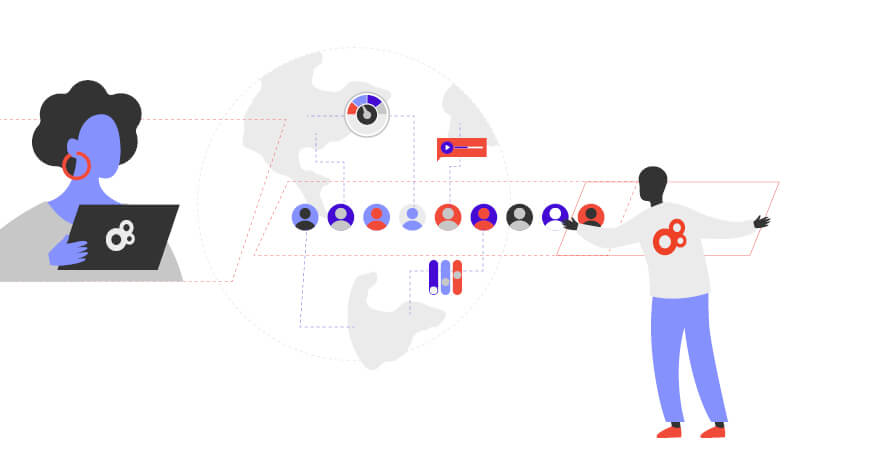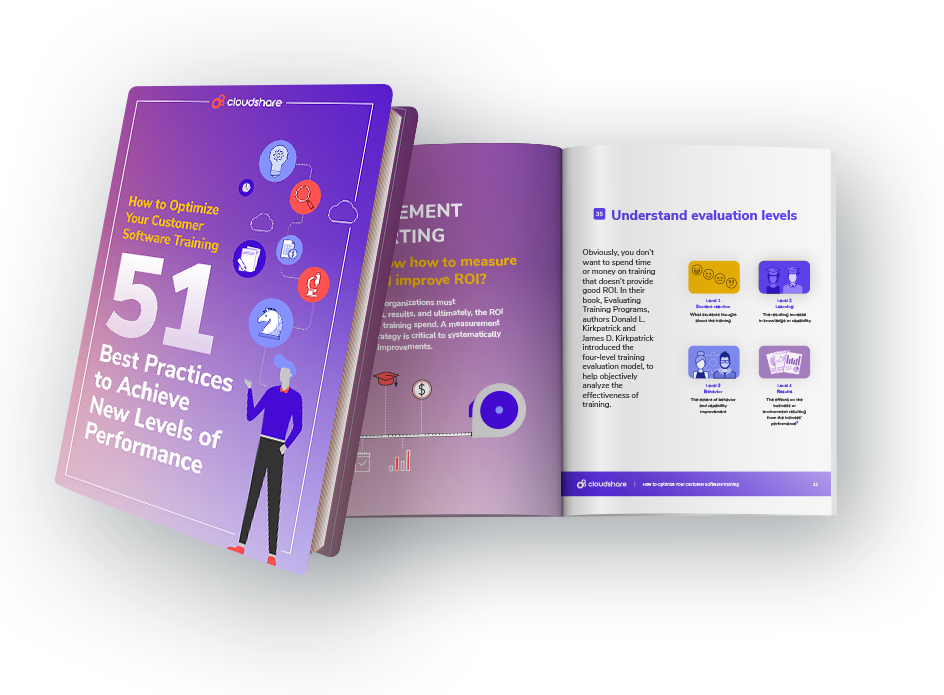
Today’s employee training strategies are evolving at breakneck speed, driven by two chief causes.
The first is the rise of the Millenials, who simply prefer a hands-on training method. Hands-on training is a better way to get through to this generation than strict lecture-style training, and more and more companies are leveraging a more experiential approach where the employee can “see for themselves” first-hand what their job will (or should) entail. This is the sociological aspect, and can’t be underestimated: Done correctly, it can directly impact employee retention. If organizations provide employees with what they are looking for, they’ll be more inclined to stay.
This shift to experiential education, and especially hands-on technical training, comes at exactly the right time. It dovetails perfectly with advances in technology that provide all the building blocks to create effective virtual instructor-led training. Let’s take a look at how today’s hands-on training has leaped forward in the past few decades, and how we expect it to get more effective and efficient.
#1 Built to Scale
In traditional classroom-based, hands-on practical training for employees, there is always a limit on physical space. A room has to be allocated (or even rented off-site) and configured, hardware needs to be brought and configured, and only a limited number of employees can be supervised by a given instructor. The moment that hands-on training goes virtual, those physical constructs fall away. In theory, you can train as many employees as you need, around the clock, with very little preparation/setup time, configuration, or costs for the physical resources. They have their laptops, you have (hopefully!) your cloud-based platform. As the COVID pandemic has taught us, scaling up sometimes happens quite unexpectedly, and the ability to scale on the fly can dramatically impact productivity, and slash expenditures of time and effort required to get the job done.
#2 Geographical Limits Fade into Irrelevance
Many HR managers who have organized a physical hands-on training workshop for an international firm hope never to do it again. The hotels, food, flights, agendas and scheduling planning (and snafus!), equipment rental… the list goes on. And from a corporate perspective, the budget also takes a hit beyond those direct expenses: the employee and training staff time that includes travel days and hours wasted over the course of the day during long lunches and breaks. Virtual training means that Ed from Toronto, Cathy from Essex, and Reyansh from Bombay can all participate from their dining room tables, without the planes, hotels, non-stop meals, and the rest of the overhead. And once training is complete? They can get right to work.
51 Best Practices to Boost Customer Software Training

#3 Tracking and Checking for Assessing Progress
Having a room full of employees sitting in front of computers may do the trick as a “checkbox item” for hands-on practical training, but aside from a single “snapshot” test at the end (or along the way), there’s no way to know how well the hands-on training went, or more importantly, who needs more training and who is ready to “graduate.” With the right platform for virtual training, the trainer can watch the progress of each trainee, jump and actually control the screen to demonstrate or correct a technique, or share that screen with the others in the class to create a teaching moment to share the knowledge. This feedback loop just isn’t possible in a traditional classroom, especially with a passive, lecture-based approach that may or may not be “sinking in.” This is why hands-on training is important; it requires the trainee to interact and perform, and that performance can be immediately assessed.
#4 Engage Every Kind of Learner
The human race is wonderfully diverse in our approaches to strategizing, mastering skills, and getting work done. And it all starts with our learning methods. Each employee, no matter how talented in certain areas, has strengths and weaknesses, preferences and aversions, and it’s now easier than ever to accommodate each with hands on technical training that provides the flexibility to maximize their potential.
- Some employees are goal-oriented Achievers – they prefer to rush to the end, win the prize, and charge on to the next challenge.
- Another group, the Explorers, is much more “Zen,” all about the road itself and less about the destination. They patiently dig, prod, study, and analyze exhaustively to make sure all the bases are covered (even questionably relevant ones) before feeling proud and accomplished.
- Then there are the Jitterers, whose fragile self-esteem requires confidence-boosting demonstrations of their abilities, without which they constantly second-guess themselves, impairing productivity.
- And we can’t forget the Yawners, who – no matter how capable and intelligent – are easily bored (even suffering ADD/ADHD) and often distracted. They can only have their efforts “activated” focused by intense stimulation.
The list goes on, but one fact unites all these personality profiles: hands-on training gives each what they need to succeed. The Achiever can triumph in succeeding in a task, and Explorer can dig through every menu, every component, every button. The Jitterer can gain confidence after repeated work, and the Yawner is kept awake and engaged.
#5 Centralized Resources and Control
Remote virtual training is almost always cloud-based, to make it easily accessible to trainers and trainees around the world – or even around the office. The business world’s shift to the cloud to reduce costs, maintenance, hardware and software updates, backups and all the corresponding IT staffing means that even when hands-on practical training is done in-house, in a classroom, it often uses the same paradigms, eliminating the technical resources and staff so integral to the process in the past. Even more, the corporate software or tools they are training with can be instantly adapted, configured, or even replaced, all in one place, for a new educational experience. Especially when training is frequent and based on ongoing changes in a dynamic company’s toolkit, this centralized, instant-spin-up implementation – and the end of one-off training server – translates to measurable savings.
The unstoppable, expanding trend of hands-on training
While in-class hands-on training is becoming widespread, virtual instructor-led training takes it up a notch, as its rapidly-advancing technology adds a level of benefits. What’s particularly exciting, and perhaps unexpected, is that even post-COVID, when in-class training is back – our clients tell us they are planning to continue to use virtual training in-class, and to thereby continue to reap these many benefits.
In short, hands-on technical training and hands-on practical training are not a fad. They are replacing traditional, passive learning in virtually all sectors and at all tiers of the workforce, and for good reason. Whether in front of a screen with virtual training, in a physical or virtual lab, a workshop, or in the field, “hands-on” is the training of the future.


